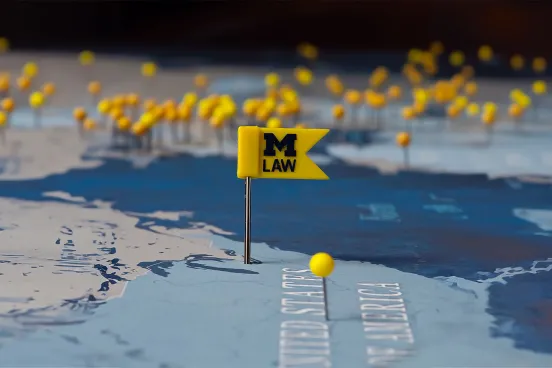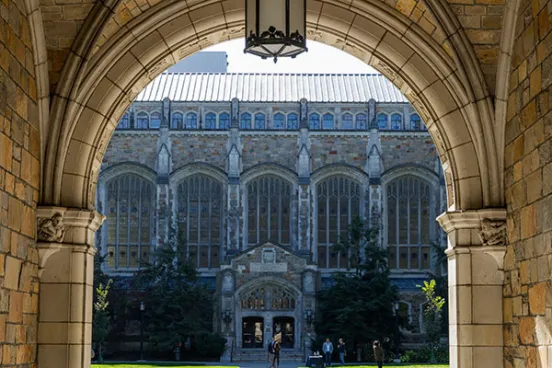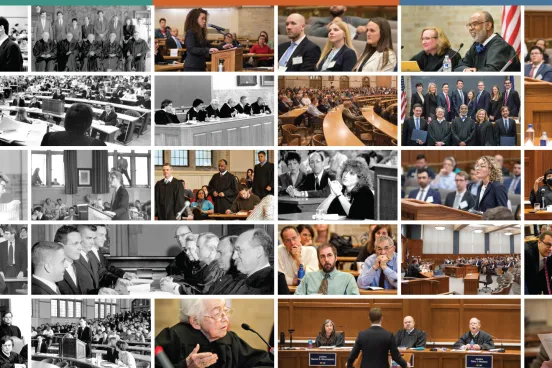The ruling was one we all expected, and yet, it is a devastating blow.
More than two decades ago, I had the good fortune to be appointed the dean of admission at the University of Michigan Law School. About two weeks before my appointment, the trial in the affirmative action case of Grutter v. Bollinger had just concluded; about two weeks after my appointment, the trial court issued a decision, holding that our admissions policy—in which race was one factor among many in a holistic process—was unconstitutional. More litigation followed, of course, and ultimately, in 2003, the US Supreme Court reversed, holding that racial diversity was a compelling state interest for a public university, and that our admissions process was narrowly tailored to achieve it.
In June, in its decisions in Students for Fair Admission v. Harvard and Students for Fair Admission v. University of North Carolina, the Court changed its mind and held that the US Constitution does not permit the consideration of race as a data point in an admissions process.
My job will be unchanged, at least for the moment. Since winning Grutter, the University of Michigan has had a 17-year natural experiment with being race-blind, as Michigan is one of the states mandating that for admissions at public universities. We won’t have to alter our admissions policies and processes in order to comply with the decision, and in fact, we may have some better luck in enrolling a more racially diverse class in the near term because while other schools are scrambling to catch up, we can rely on the experience we have accumulated.
That 17-year experiment, though, and the experience of other similarly selective race-blind institutions, demonstrates how using race as one factor among many in a holistic admissions process is absolutely critical to attaining racial diversity in a student body. At Michigan, despite truly extraordinary institutional effort at every step of the process—including admissions and financial aid programs aimed at enrolling more low-income students—the undergraduate percentage of African Americans has dropped by 44 percent; the percentage of Native Americans has dropped by 90 percent. African Americans now comprise 3.9 percent of the undergraduate student body, and Native Americans are closer to zero than to 1 percent. The experience at UCLA and Berkeley, similar schools who have been under identical restrictions for more than 25 years, is equivalent, if not worse.
Race-conscious admissions have historically been employed at a relatively tiny number of the nation’s roughly 4,000 undergrad schools (as well as all medical schools and some portion of law schools, business schools, and grad programs) because a school has to be highly selective in order for race to have any meaningful role in the decision-making. Common estimates are that about 3 percent, or 120, undergraduate institutions do so.
So why do we even care?
We care because higher education in general is the single biggest driver of social mobility and income improvements and because these few institutions play an outsized role in that process. And the fact that the impact is small when measured by the total number of institutions affected doesn’t mean that the results won’t be dramatic when measured by the number of humans.
With the Michigan numbers in mind, I looked at the undergraduate populations at 14 top public and private universities (all of which have, until now, used race-conscious admissions) that have a combined enrollment of 340,000. If the experience at those schools is analogous, then four years after this decision, we can expect to see 44,000 fewer students who are non-white and non-Asian at those schools—a decrease from 34 percent to 24 percent. We can also expect 7,500 fewer African American students—a decrease from 5.4 percent to 3.2 percent.
When one considers that even among the most selective undergraduate institutions in this country, few have the financial resources, or long-term institutional commitment to diversity, of the University of Michigan, I think it’s fair to suppose that the actual change might be even starker.
The national population of high-schoolers applying to college, however, will presumably remain diverse and become increasingly so as the country continues to proceed toward a minority-majority reality; changing demographics may eventually serve to reinstate racial diversity at the colleges I am speculating about. In contrast, professional and graduate programs will have precisely the opposite experience: In about five years, the graduating classes of colleges will start being far less racially diverse, and thus the national applicant pool for post-college programs will be too.
When Michigan Law went race-blind in 2007, the depressing effect on our student body’s racial diversity was instantaneous—and that was in the context of a nationwide applicant pool that itself was not affected by race-blind policies. The layering of a race-blind policy on top of an applicant pool that is far less racially diverse at the outset will compound the negative effects, with outcomes that will be far worse even than we saw then. It will be many, many years before changing demographics alone can rectify these changes.
Senior Assistant Dean Sarah Zearfoss, ’92, has led the Law School’s admissions and financial aid offices since 2001. Although in the 2003 Grutter v. Bollinger decision the Court ruled that the Law School was justified in considering race in admissions, in 2006, Michigan voters passed Proposal 2, which amended the state constitution to ban affirmative action in admissions. This essay originally appeared on bet.com.







